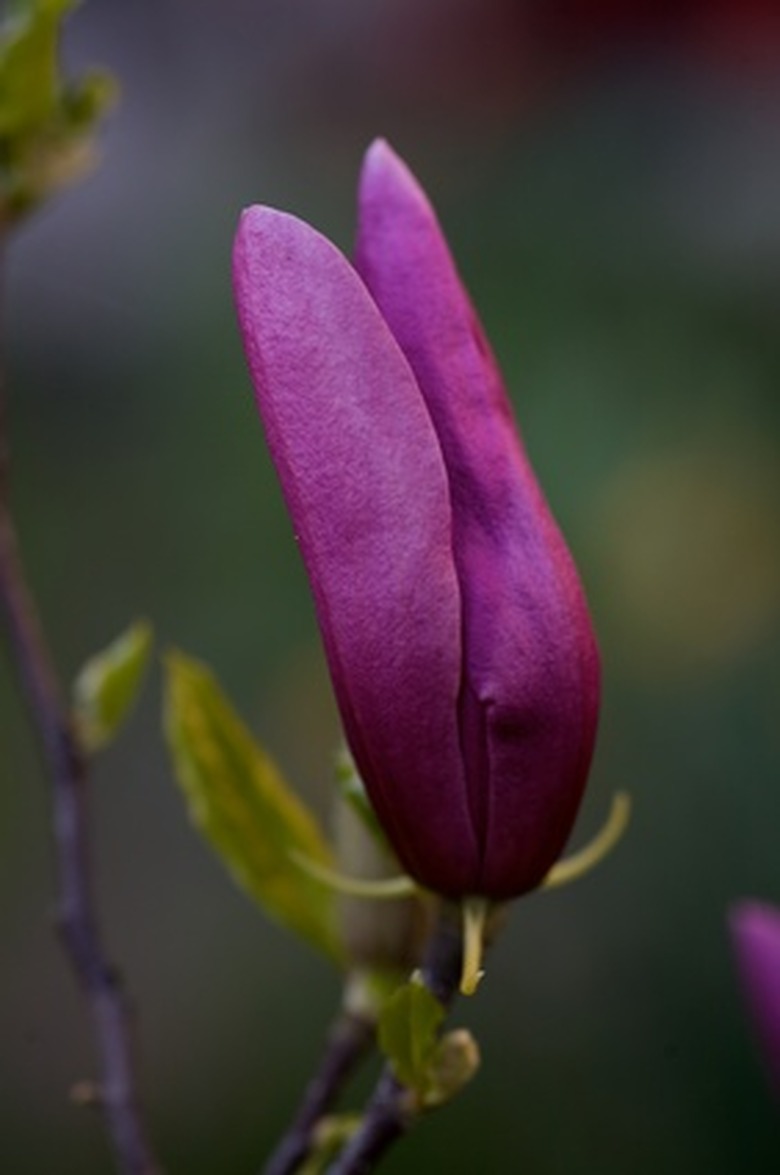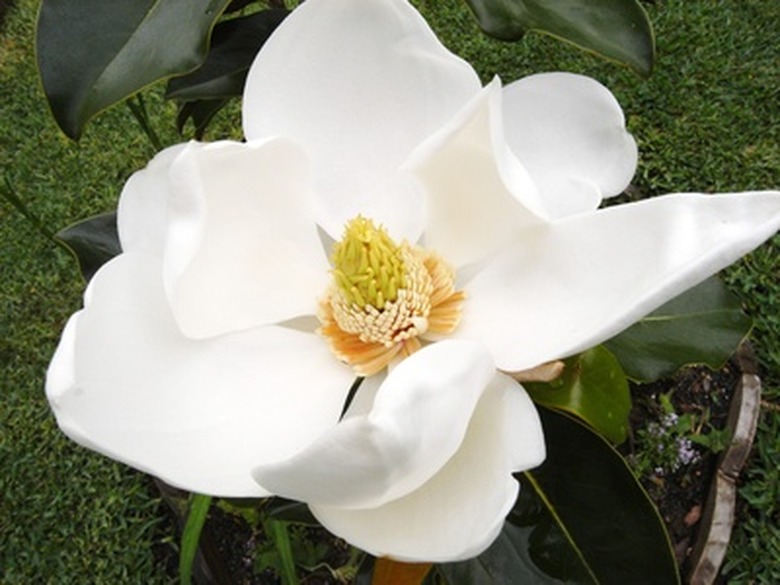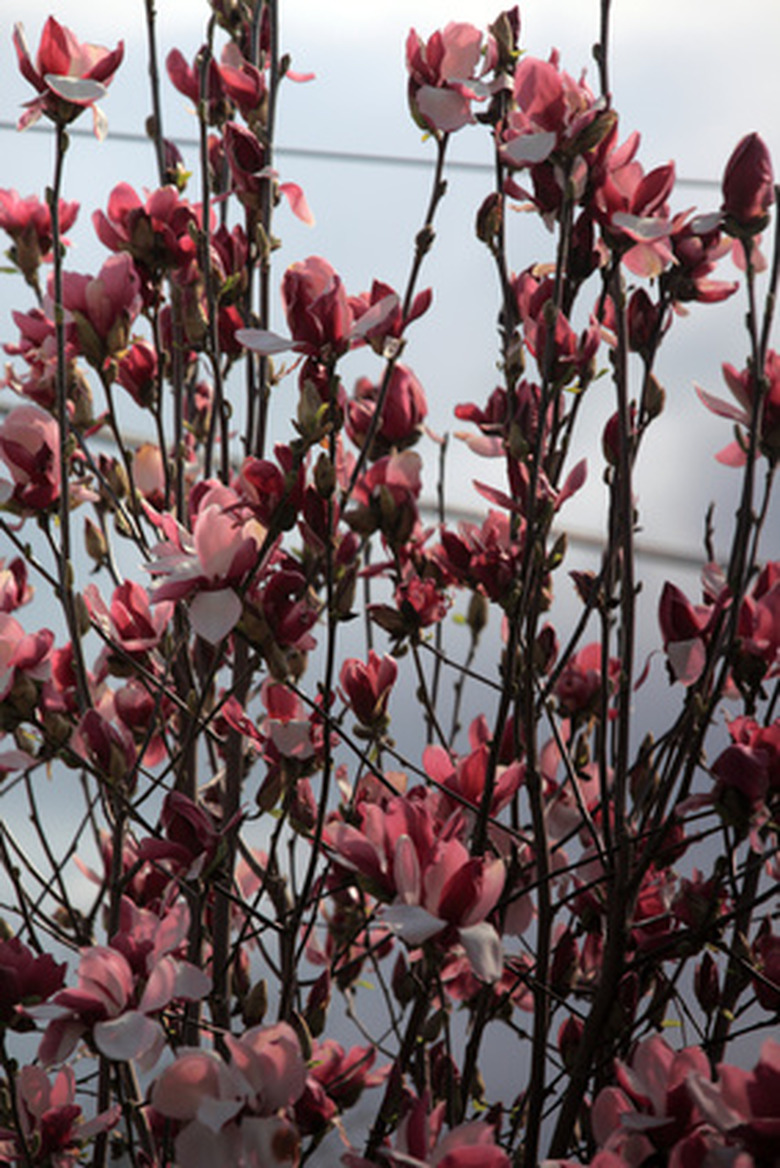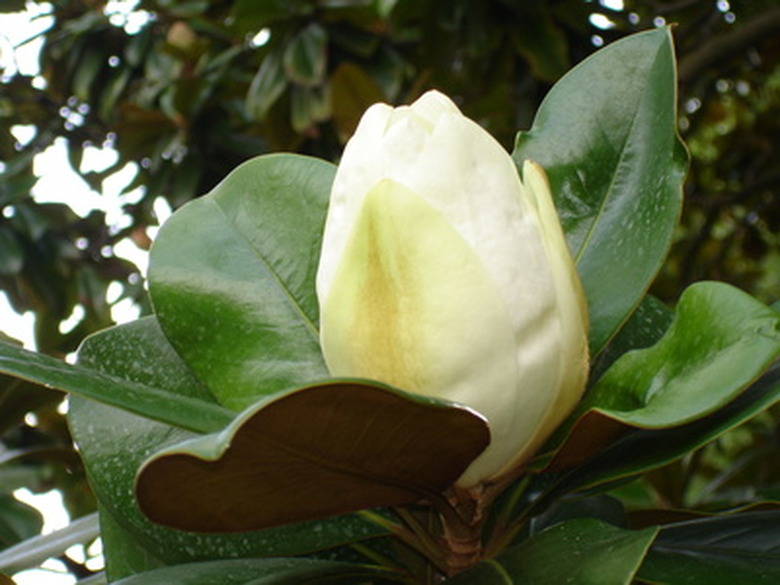The Best Magnolia Trees
Magnolias are unsurpassed for their large fragrant flowers, but the trees have very specific growing requirements. Magnolias have delicate, fleshy root systems. It is important to treat the roots with care when planting them. Once they are settled in, do not move them, and avoid installing other plants around their root zones. Because of the early emergence of most magnolia flowers, magnolias are subject to sudden spring cold snaps. Give your magnolia space to grow, and choose the best variety for your region.
Evergreen Magnolias
The Southern magnolia (Magnolia grandiflora) stands alone as a landscape tree because of its commanding appearance and size. The species can reach 60 to 100 feet in perfect conditions. The dark, glossy 6- to 8-inch leaves are evergreen, which sets it apart from other magnolias. The fragrant, white summer flowers are 6 to 12 inches across. Southern magnolia is native to North Carolina and hardy to USDA hardiness zone 7. Fortunately, smaller cultivars have been developed.
- Magnolias are unsurpassed for their large fragrant flowers, but the trees have very specific growing requirements.
- The dark, glossy 6- to 8-inch leaves are evergreen, which sets it apart from other magnolias.
A 30-foot variety, Victoria, still retains the immense flower size of the species. Another notable variety is Brackens Brown. The underside of the leaves have an attractive, felt-like brown layer. This tree will reach 20 feet tall and 8 feet wide at maturity. Edith Bogue is one of the toughest for Northwest gardens. It is a columnar magnolia reaching 25 feet tall. For the smaller setting, Little Gem tops out at 15 to 20 feet tall.
- A 30-foot variety, Victoria, still retains the immense flower size of the species.
These varieties are all hardy to USDA zone 6. Once established, evergreen magnolias tolerate sun and heat well. They prefer a loose, rich, slightly acidic soil.
Magnolias for Small Landscapes
Smaller magnolias are more suited for the average garden.
Oyama magnolia (Magnolia sieboldii) is a small tree that will reach 6 to 10 feet tall. The flowers are creamy white with burgundy stamens. This magnolia will bloom sporadically from late spring through summer. The seed pods are an interesting bright pink. Oyama magnolia is hardy to USDA zone 4. Butterfly magnolia (Magnolia 'Butterflies') has rich yellow, cup-like flowers. The flowers appear in spring before the leaves emerge. It will reach 15 to 25 feet in the landscape. Butterfly magnolia is hardy to zone 4.
- These varieties are all hardy to USDA zone 6.
- Butterfly magnolia (Magnolia 'Butterflies') has rich yellow, cup-like flowers.
The star magnolia (Magnolia stellata) will reach a height of 10 feet. Its two attributes are its small stature and its very early spring bloom. It starts out with pink-to-red buds, which open as multiple linear white petals. Star magnolia is hardy to zone 5. Often called tulip magnolia, Magnolia liliflora has deep purple, tulip-like blooms. The flowers may appear just before the foliage, or at the same time. This is an 8- to 12-foot tree. Tulip magnolia is hardy to zone 5.
- The star magnolia (Magnolia stellata) will reach a height of 10 feet.
These varieties do well in full sun, but the foliage will look better given afternoon sun protection. Grow them near larger trees that will cast an afternoon shadow. They like rich, loose soil that is slightly acidic.
Larger Deciduous Magnolias
Big-leaf magnolia (Magnolia macrophylla) is an immensely beautiful tree. Over time it will develop into a 30- to 40-foot tree. It has the largest leaves of all the magnolias. The leaves have a heart-shaped base and appear along with the large, cup-like flowers in early summer. The flowers are creamy white and can reach a width of 16 inches. The large 1- to 3-foot long leaves look tropical. Big-leaf magnolia is hardy to zone 4.
- These varieties do well in full sun, but the foliage will look better given afternoon sun protection.
- Big-leaf magnolia (Magnolia macrophylla) is an immensely beautiful tree.
The Yulan magnolia (Magnolia denudata) is a fast-growing 30- to 50-foot tree. It develops creamy 4- to 8-inch creamy white tulip-like flowers in spring just before leaf-break. Yulan magnolia is hardy to USDA zone 5.
These magnolias do best in rich, well-draining soil. They prefer full sun but will grow in partial shade.



